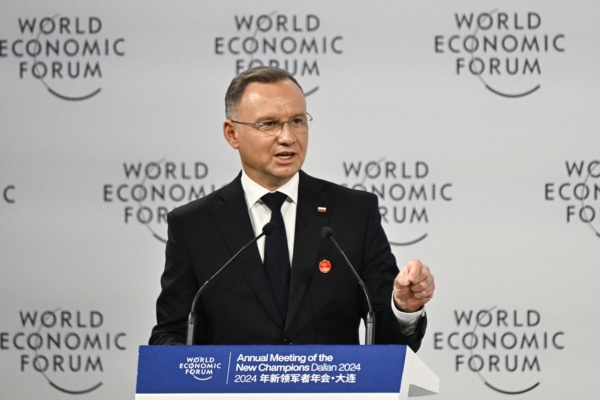Polish President Andrzej Duda’s visit to China last month revealed more details. It was reported that during his speech at Fudan University, Duda touched on three sensitive issues in Beijing, including term limits for leaders, facial recognition surveillance, and historical occupation of Chinese territory by Russia. However, his speech content was not published on Chinese websites.
From June 22 to 26, 2024, Polish President Duda visited China for 4 days, meeting with the Communist Party leader Xi Jinping to discuss the economic and trade relations between the two countries and security issues related to the Russia-Ukraine war. On the morning of June 26, President Duda visited Fudan University and delivered a speech in the Yuantianfan lecture hall in the Guanghua Building.
Duda has long been seen as one of the most pro-Beijing figures in Polish politics, but he still took the opportunity to address sensitive issues during his speech to Fudan students. However, these contents did not appear in the official press releases on the Fudan University website.
According to a report on July 2 by the European edition of the U.S. media outlet Politico, Duda will resign next year after serving two terms. He conveyed information about European democracy to Chinese students at Fudan University: “In our country, according to our constitution, a person can be President for two terms, and then it ends; then you have to leave, you become a former President. So, someone else will take my place.”
Duda mentioned that Polish leaders can only serve two terms, a sensitive issue in China. Chinese Communist Party leader Xi Jinping abolished the term limits for the President in 2018, causing significant controversy. Currently, Xi Jinping is serving his third term.
Duda also mentioned China’s surveillance practices and violations of privacy, hoping that nobody was nodding in agreement, and that nobody was being recognized by surveillance cameras.
He specifically mentioned Russia’s annexation of Chinese territory. Duda said, “When I look at the map of China today compared to the map of the Qing Dynasty, I see differences, I see territories lost through the actions of neighboring countries.” Politico’s report stated that this remains a sore point for many in China.
Historical records show that after 1840, the corrupt and weak Qing government allowed Tsarist Russia to invade China, resulting in the signing of seventeen unequal treaties, with the three most significant ones being the Treaty of Aigun, the Treaty of Beijing, and the Sino-Russian Boundary Treaty of 1860. These treaties took away over 1 million square kilometers of Chinese territory.
After the end of World War II, most of the Chinese territories occupied by other countries were returned to China, except for the land still held by the former Soviet Union.
On December 9, 1999, then Chinese Communist Party leader Jiang Zemin and Russian President Yeltsin signed the “Agreement on the Description of the Eastern and Western Sections of the Sino-Russian Border.” This agreement fully acknowledged the series of unequal treaties signed between the late Qing government and Tsarist Russia, unconditionally giving over 1 million square kilometers of Chinese Northeastern territories to Russia, including the Tumen River estuary. Jiang Zemin also gave away the Tangnu Ulianghai region, an additional 170,000 square kilometers of Chinese land that had been illegally occupied by Russia without any formal agreement.

